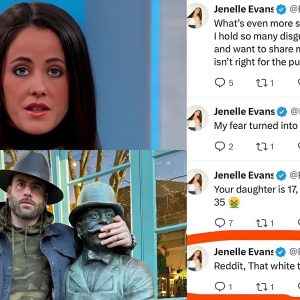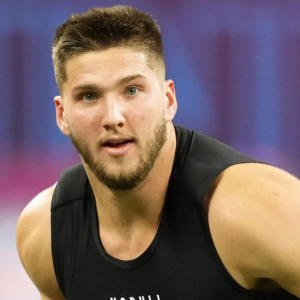Now, before we begin, we ask for a little extra patience from our readership. We are deep into the desert days of summer, with only the occasional Daniel Sprong-sized oases of hockey content available to sate our endless appetite.
It’s a time of year when we at CanucksArmy give ourselves extra permission to get weird and try out some non-traditional hockey coverage.
That’s why we’re going to start this article by talking about movies, but don’t worry, we’re working it back to the Vancouver Canucks eventually.
There’s a semi-popular notion out there about the annual Academy Awards, often repeated by podcasters like Bill Simmons or Jack O’Brien, and it can casually be referred to as the “Five-Year Oscar Test.” The notion goes that when the Oscars get handed out each year – specifically, the award for Best Picture – they almost always go to what seems like the wrong film. Oscar Buzz is a real thing. But once it wears off, we find that the vast majority of Best Picture winners lack staying power and are quickly drowned out in our collective memory by other, better movies that came out that same year.
The suggestion behind the “Five-Year Oscar Test,” then, is to wait at least a half-decade before judging films to more earnestly assess their true impact – and to wait that long to hand out any awards, too.
It’s a principle that we believe can equally be applied to hockey transactions as it can in movies.
But, first, a demonstration.
The 91st Academy Awards, held in February 2019, celebrated the best of cinema from the year prior. The Best Picture prize went to Green Book, a film we’re guessing that very few of you saw in the first place and that even fewer have taken the time to see since. The shine came off of Green Book before the producers even took the stage to give thanks, and within a matter of months, folks could have told you it was the wrong choice.
Five years out, picking Green Book looks silly. What film should have won? Spider-Man: Into the Spider-Verse, obviously. The cinematic world didn’t know quite what to do with that masterpiece when it first hit the scene. Could a cartoon really compete for Best Picture?
Five years later, it is clear that Spider-Verse was not only the best animated film to come out that year – one that nearly every animated film released since has tried to replicate – but also the best film, period. And certainly the one with the greatest impact.
And you know what another decision circa 2019 was that drew a lot of questions at the time?
The Vancouver Canucks’ decision to acquire one JT Miller.
It was Draft Weekend 2019, and we had a trade to announce.
The Canucks sent a conditional 2020 first-round pick (conditional on the Canucks making the 2020 Playoffs), a 2019 third-round pick, and goaltender Marek Mazanec to the Tampa Bay Lightning in exchange for Miller.
At the time, Miller was coming off a season of 13 goals and 47 points across 75 games for the Lightning and was signed for the next four seasons at a cap hit of $5.25 million.
The reaction was explosive, to say the least, and much of it was of the negative variety. Viggo Mortensen and Mahershala Ali had nothing on this controversy.
Fans and media alike questioned the qualities of Miller, who arrived in Vancouver with a career-high of 56 points and a reputation for cantankerousness. They definitely questioned the wisdom in the Canucks – who had missed the playoffs in four straight seasons at that point and were just welcoming Elias Pettersson and Quinn Hughes into the fold – trading any sort of future assets away, much less a first-round pick.
There were plenty of people, this author included, who were ready to call it a “bad trade” in the moment. And those people, this author included, were wrong to do so. As we apply the Five-Year Oscar Test to the Canucks, we find a deal that only looks better and better as time wears on.
Let’s start by tracking those outgoing assets over the next five years.
Mazanec is an easy one. He never played for the Lightning but instead returned to Czechia for the 2019/20 season, where he’s remained ever since. Mazanec won three straight Czech championships over the past three years, so the move has been a positive one for him. But as far as the trade goes, he’s a non-factor. Or, perhaps, a positive for the Canucks, in that Mazanec got out of the way, and a young Thatcher Demko stepped in.
The third-round pickturned into a selection later that same day. A five-year period isn’t the be-all and end-all for a prospect, especially one picked later in the draft, but we should have some idea of their quality by now.
In this case, the Lightning used Vancouver’s 71st overall pick to select Hugo Alnefelt, a 6’3” goalie out of Sweden.
For a time, Alnefelt was considered a solid prospect. He starred for Sweden in the 2020 World Juniors, played a couple of years in the SHL, and then came to North America for the 2021/22 season.
Since then, he’s put together 86 games in the AHL, two in the ECHL, and just one in the NHL for the Lightning. It’s perhaps no surprise that the 23-year-old Alnefelt has decided to return to the SHL for the 2024/25 season, leaving his NHL future up in the air.
On the other hand, the conditional first-round pick had a much stranger journey. The condition on it was that if the Canucks made the 2020 playoffs, otherwise it would slide to the following year.
Now, when the 2019/20 regular season ended, the Canucks were not technically in a playoff spot. They were tied for the final spot with the Nashville Predators, but the Preds had one more regulation win, giving them the tie-breaker.
However, the 2019/20 regular season had ended unlike any other, in the midst of the COVID-19 pandemic. And once play resumed, a set of play-in series were announced. When the Canucks defeated the Minnesota Wild and moved on to face the St. Louis Blues in the “First Round,” the condition was hit, and the Canucks’ first-round pick went to Tampa.
Or, at least it would have had the Lightning not already promised it to somebody else. In February 2020, the Lightning sent this pick (still conditional at the time) and Nolan Foote to the New Jersey Devils in exchange for Blake Coleman.
The Devils held on to the pick long enough to select LHD Shakir Mukhamadullin at 20th overall. Mukhamadullin developed well enough through three KHL seasons that he was one of the key pieces going to the San Jose Sharks in the blockbuster Timo Meier trade.
Mukhamadullin made his NHL debut for the Sharks in 2023/24, notching one assist in three games. He’s still considered a notable prospect and can usually be found ranked somewhere in the top five for the Sharks – which means he’d rank even higher were he in the Vancouver system, as the Sharks are extremely deep on prospects.
Of course, as much impact as Mukhamadullin may or may not make for the Sharks, it pales in comparison to what Miller has done – and is still doing – for the Vancouver Canucks.
Miller was almost an instant revelation for the Canucks.
His first year in Vancouver saw him post career highs in goals (27), assists (45), and points (72), followed by an 18-point playoff run.
But Miller was just getting warmed up.
The following year, he notched 46 points in 43 games, a mild step-back. This campaign, especially coinciding with the Canucks falling out of the playoffs again, was probably the height of Miller’s criticism from the fanbase and media sphere.
And, like Michael Jordan, he appears to have taken that personally.
In 2021/22, Miller hit a new gear, posting a preposterous 32-goal, 99-point season that pushed him into the upper echelons of NHL scoring. His timing was brilliant, too, with this offensive explosion coming right as he entered the last year of his previous contract.
Here, there was a real split in the discourse. Many, like this author, thought that the Miller trade was still ill-timed (a win-now move when the team was not particularly close to winning) but that they had lucked out through Miller’s ascension. The thought was that now the Canucks could sell high on Miller, clearly peaking at the age of 29, and use the presumably massive return from the trade to supplement the core of Pettersson, Hughes, and Demko.
Others felt differently. They believed that Miller’s 99-point season was not so much a peak as the entering of Miller’s prime years – just a little later than most players – and that he, too, was now an important part of the team’s core.
Well, this isn’t the two-year test article, but we can fairly confidently say that the naysayers had it wrong, and the Millerites had it correct. Incoming GM Patrik Allvin certainly thought so, as he inked Miller to a seven-year, $8 million AAV extension in September 2022.
Miller rewarded the team’s faith with another point-per-game campaign in 2022/23 (82 points in 82 games), and even then, the best was not to come.
Miller hit another level for 2023/24. He once again hit new highs for goals (37), assists (66), and points (103), proving wrong all those who thought he had peaked. He also helped push the Canucks into the playoffs and all the way to Game 7 of Round Two against the Edmonton Oilers.
More than that, Miller has become a clear-cut leader on the team. When critiques were correctly raised about his defensive lapses, Miller went back into the lab and came out of 2023/24 with Selke votes and Connor McDavid shutdown duties. Whenever Pettersson stumbled on his own climb to 1C status, Miller stepped up to carry the team’s offence. As his heartwarming enemies-turned-friends arc with Brock Boeser proves, Miller has put genuine work into curbing whatever reputation he brought with him from Tampa.
The Canucks are a team on the rise. The core coalesced together at exactly the right time, and now the competitive window is open for at least the next couple of years. Playoffs are no longer the expectation. Playoff success is now the benchmark.
It’s hard to imagine any of that happening without Miller. This Canucks core could have developed exactly as well as it has, and with no Miller, they’d still be on the outside of the playoff picture looking in. Then again, it’s also hard to imagine the likes of Pettersson and Hughes developing as well as they have without Miller around, too.
Five years later, the Miller trade looks like a move that has saved the Canucks from squandering one of the best young cores they’ve ever put together. The glue that ties this whole enterprise together. The piece de resistance.
All that for two Europe-bound goalies and a defender who might make a bit of an impact in San Jose within the next couple of years?
That’s an Oscar-worthy performance if we’ve ever heard of one.





